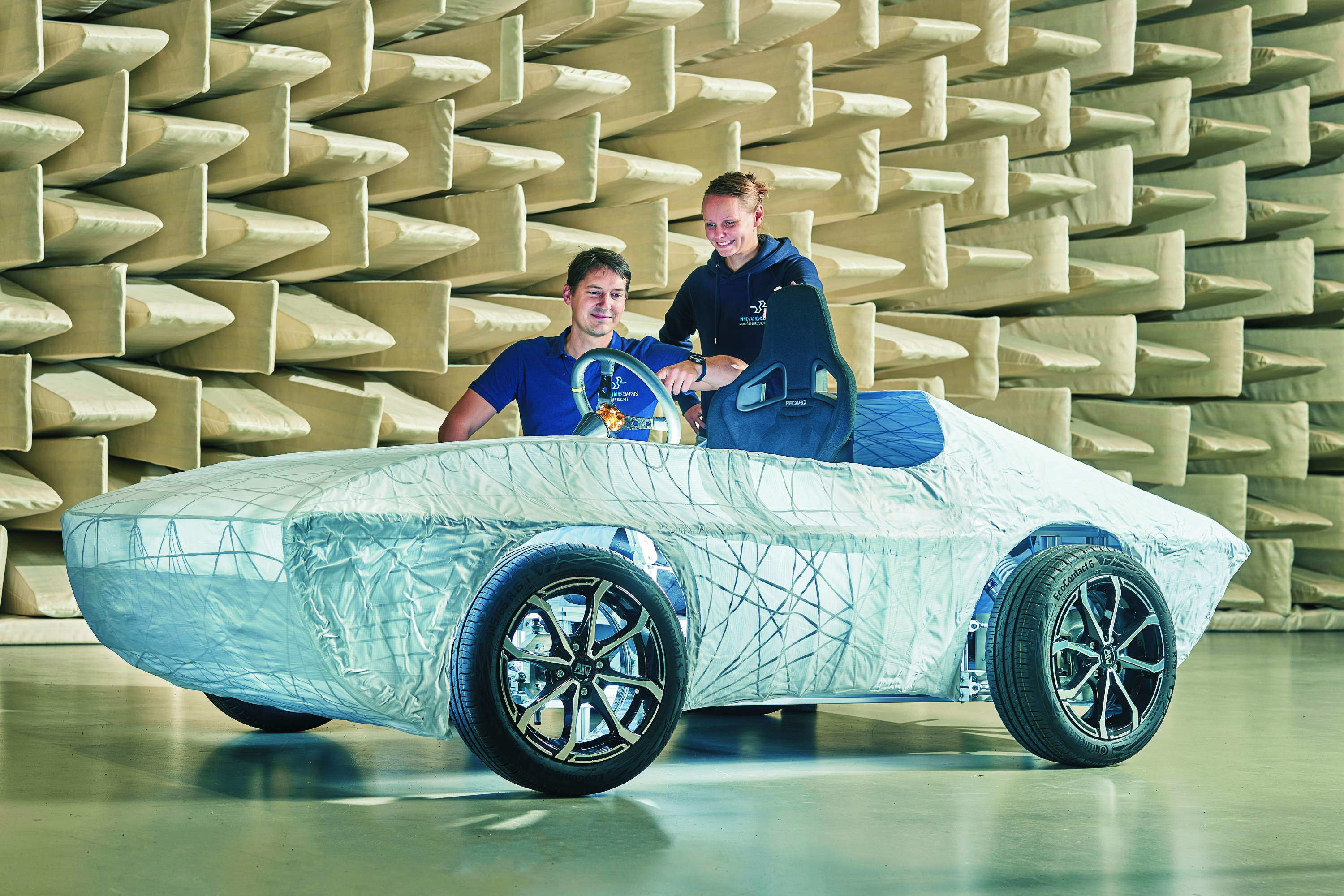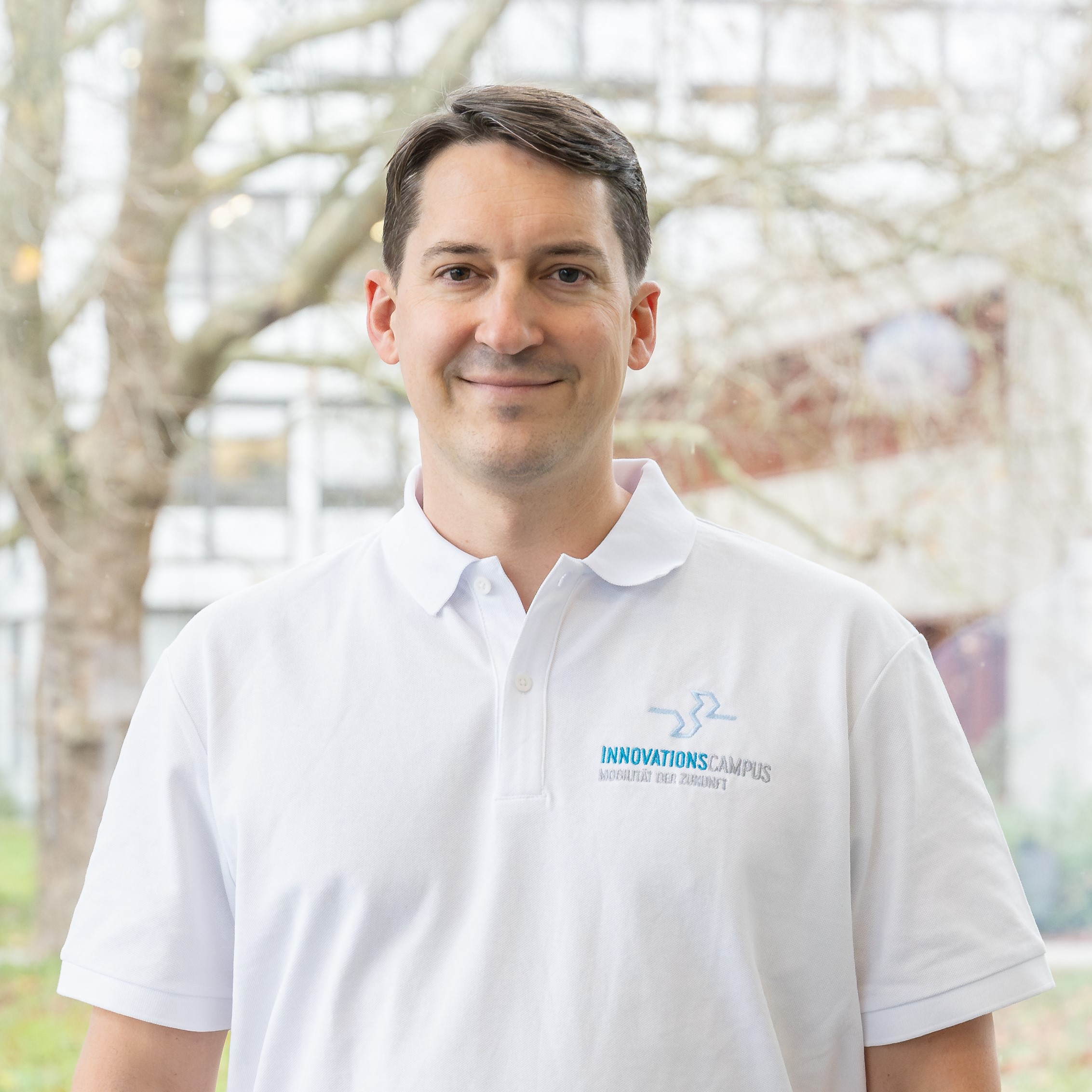
DeVee test vehicle
The scientists are building various subsystems for a future vehicle concept into this small vehicle, for example innovative electric motors without rare earths that they have developed themselves. The concept corresponds to a flexibly deployable lightweight vehicle that contributes to sustainable and networked mobility, for example as part of an autonomous car-sharing fleet.
Projects involved in DeVee
General
In order to demonstrate the applicability of the developed modules in a real vehicle concept of the future and to make the project results accessible to experts, the media and the public at exhibitions, the developed subsystems were combined in the common test vehicle "DeVee".
Drives
To make the vehicle ready to drive, this project will design the traction engines with the desired driving performance as a boundary condition and prototype them as an engine-transmission unit. This subsystem will be integrated into the overall vehicle by means of a modular interface.
In this project, the components of a fuel cell drive system were mechanically adapted. In addition, the fuel cell system and the drives were electrically integrated. Control software was also implemented in the vehicle to display the driving function.
The aim of this project is to be able to manufacture the components relevant for the construction of a highly efficient transverse flux machine using largely automated additive-subtractive process chains in multi-material design. The newly designed process chains should enable a significantly more efficient production of transverse flux machines with higher power density and quality.
In the ReMoS project, a novel concept was researched to increase the power density and efficiency of the SRM (Synchronous Reluctance Machine). This could make the SRM an alternative for traction applications to electrical machines using rare earths, the use of which is extremely questionable ecologically and politically.
More about the ReMoS (Phase 1) project
In the second phase, the construction of the prototypes was planned. To this end, the assumptions made about the interface strength between the electrical steel strip and the fiber-reinforced polymer were investigated experimentally, the rotor geometry was adapted according to the results, tools for injecting the polymer into the flow barriers were designed and the existing rotor and stator concepts were validated by means of setups and measurements.
Chassis and vehicle components
The aim of the project was to design and construct a chassis for the test vehicle while maintaining the objectives of BUP4 for accommodating prototypes of the various ICM sub-projects. For this purpose, the existing frame structure of the test vehicle was used as a starting point for the production of new chassis approaches using 3D free-form fiber winding technology. This technique makes it possible to produce load-bearing structures only where they are needed, while at the same time maximizing the lightweight construction potential.
Production, as well as subsequent recycling and material separation at the end of the product's service life, must be taken into account during the design and construction phase. Based on sustainable, hybrid natural fibre composites, components are designed, numerically optimized and manufactured for specific loads. The use of natural fiber composites also improves the power-to-weight ratio and ride comfort, while the lightweight construction also reduces the moving mass.
In the project, basic investigations into the additive-subtractive process chain were carried out with the aim of realizing the near-net-shape and functional production of components. Laser deposition welding with metallic wire (directed energy deposition - DED-LB) and powder bed-based laser melting (laser powder bed fusion - LPBF) as well as the ceramic process LCM (modified SLA process) were used as additive manufacturing processes. Component accuracy and properties of the target components were primarily influenced by the process parameters and kinematics of the additive manufacturing process and finally determined during post-processing.
Software
The aim of this project is to upgrade the existing eVee vehicle fleet with a universal E/E architecture (electric-electronic architecture) in order to be able to integrate research results and future issues from the field of automated and autonomous driving. With the universal E/E architecture, important issues of automated and autonomous mobility such as drive-by-wire, Car2X and over-the-air updates can be addressed in the future and tested on the demonstrator vehicle.
The project aims to develop a virtual reality driving simulator based on the test vehicle in order to validate driving functions such as autonomous driving. Simulations enable virtual optimization of driving dynamics and the effects of sensors and actuators before a physical prototype is created.
The aim of the project is to build a mobile sensor platform that can be used in a variety of ways thanks to various mounting options, e.g. on a car roof rack, on the "DeVee" demonstrator vehicle or on a platform truck. The mobile sensor platform is to be used as a research and teaching laboratory and make it possible to experience concepts and technologies for autonomous driving interactively and vividly.

Till Falco Böse
Transfer Manager